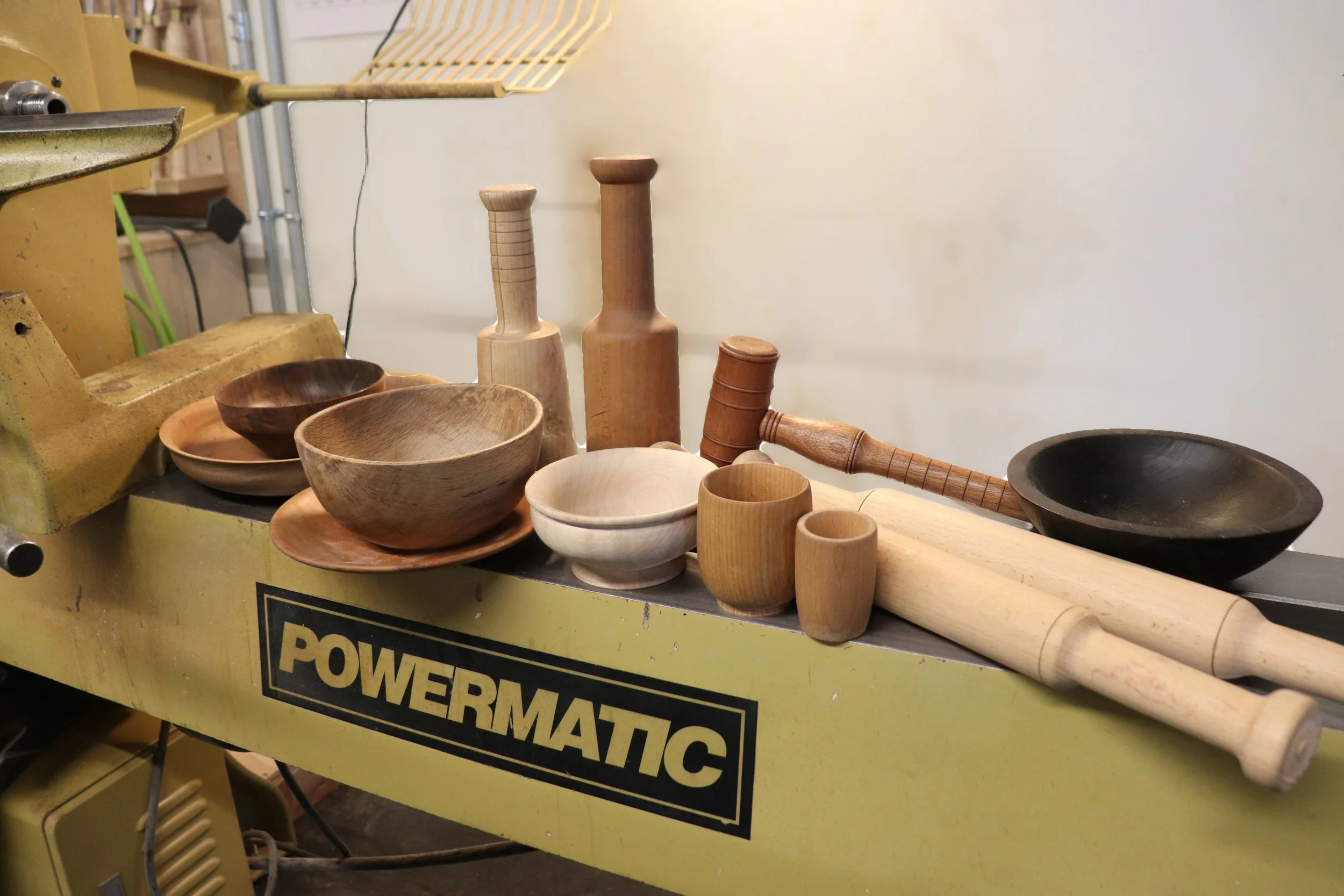Foundations of Wood-turning
Key information
24 hours of training, 3-4 finished projects
$850, includes all materials & supplies
Qualifies you to use the wood lathe, bandsaw, drill press, and miter saw.
Shaping a bowl bottom
Exploring different shapes and sizes of bowls, plates, and cups
Class description
In this multi-session training, we go beyond the basics of using the wood lathe and dive deeper into a variety of skills. This class is intended to give you a strong foundation as a wood turner, including the skills and confidence to keep exploring the craft on your own after the end of the course.
In this course we will cover bowl & spindle turning, two fundamental styles of wood turning, including the workflow, tools, and techniques required for each. We will also cover sourcing wood including local and online places to purchase wood blanks, as well as finding natural wood locally. We will also talk about sanding and finishing, how to elevate your finished projects by properly sanding and sealing them, plus how to navigate the confusing world of wood finish options.
Class outline
This class consists of 24 hours of in-person sessions which meet over 6 - 8 sessions. Schedules for each course vary depending on instructor availability, make sure to carefully read the schedule for your course. An active membership with Humanmade is not required, all are welcome.
Stage 1: Learning the ropes
In the first session we will focus on learning basic safety about the lathe itself, and about some essential supporting tools, including the miter saw, bandsaw, and drill press. You will practice making one or several small, very simple pieces to understand the techniques involved.
Stage 2: Spindle turning
Spindle turning typically involves long, skinny projects such as furniture legs, railings, rolling pins, walking sticks, and more. We have a menu of several projects to choose from, such as rolling pins, candle holders, and mallets. Each person will choose from several species of wood and get to personalize the details of their project.
Stage 3: Bowl turning
The second half of the course will focus on bowl turning, also called faceplate turning. In this stage each participant will make one standard bowl from a wood species of their choice. Anyone who finishes their bowl before the final session may also be able to choose a second blank and explore other options for bowl shapes and sizes.



